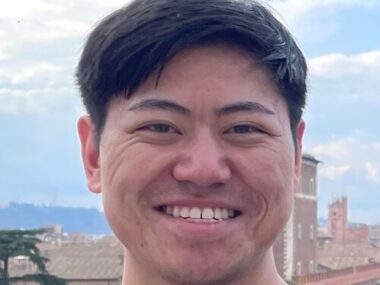My fight for Evrysdi continues after nearly a year of crowdfunding
Accessing the SMA treatment as an adult in Singapore is an uphill battle
Written by |

I was apprehensive when I was wheeled into my neurologist’s clinic on Jan. 18. I had taken my last dose of Evrysdi (risdiplam), a life-changing oral treatment that can improve motor function in SMA patients, during the last week of September. That was four months ago.
“Why does she need to see me now?” I wondered. “Does she have good news about getting public aid to help me afford Evrysdi?”
Unfortunately, the answer was no. There’s not much my doctor can do on that front. Not yet. She, like myself and the rest of Singapore’s public healthcare system, is awaiting our government’s plans to help SMA patients afford a better quality of life. The hope is that we will get an update from our health officials this year. But even then, there’s no guarantee I’ll be eligible for public aid, given my age (25) and state of disease progression.
As my neurologist said, “It’s an uphill battle for you, Sherry.”
It’s easier to give public aid to babies and children. They require a lower dose of Evrysdi than adults, which would save the government a lot of money, and their earlier state of disease progression makes them likelier to become almost nondisabled with treatment. If adults with SMA don’t receive the drug, we are more likely to die of complications, ultimately freeing up more medical and financial resources for others — never mind the incalculable emotional cost for our loved ones and the brilliance lost.
It’s all cold, unfortunate mathematics that, to my perception, governments feel they must employ for the “greater good.”
My appointment did bear some good news, however: Even four months after my last dose of Evrysdi, its effects had not yet fully worn off.
Checking in with my checkup
On my third day without Evrysdi in September, I felt an immediate difference. My throat felt, for lack of a better description, harder to manipulate. It was like I’d lost access to a certain part of it. From then on, I braced myself for a quick crash in strength and stamina. After all, Pompeii wasn’t built in a day, but its obliteration by Mount Vesuvius took less than 48 hours. So it often is with human bodies as well: It’s quicker to fall ill than to recover.
I didn’t expect that three months on Evrysdi would stall my disease progression for very long. When my speech therapist recently gave me 100 milliliters of water to test my swallowing speed, as she did last July, it took me 34 seconds. That’s a marked deterioration compared with just 16 seconds in July, when I had been on Evrysdi for two months. Still, it’s much better than the 52 seconds it took me at my baseline last March, before Evrysdi.
Cold, unfortunate mathematics
When March rolls around, my crowdfunding campaign to afford a year’s worth of Evrysdi treatment here in Singapore will turn a year old. As of this writing, I’ve raised 44,887 SGD ($33,500) of a total needed of 375,000 SGD (about $280,000). I need a minimum of 187,500 SGD ($139,940) for the funds to be released to me, or they’ll go to the next SMA patient who crowdfunds for treatment, per a promise I made to the crowdfunding platform.
I didn’t think it’d be easy to attain my goal, but I also didn’t think it’d be this hard, either. I’ve seen parents of SMA babies reach ambitious crowdfunding goals for Zolgensma (onasemnogene abeparvovec-xioi) within months. They also received much more press coverage than I have.
While I do believe it’s much easier to sell the idea that babies and children should receive expensive treatment, I can’t say for sure why my campaign has received less exposure or donations. But I can say that, with each passing day that I don’t reach my funding goals, it’s becoming less and less likely that I’ll taste Evrysdi and the strength it gave me ever again.
Unless, of course, Singapore’s healthcare officials soon decide that SMA adults are worth giving treatment to. After all, it’s a new year with new possibilities.
In the meantime, I will do what I can for myself and other adult SMA patients. I’ll keep fighting the good fight. To me, we are more than worth it.
Note: SMA News Today is strictly a news and information website about the disease. It does not provide medical advice, diagnosis, or treatment. This content is not intended to be a substitute for professional medical advice, diagnosis, or treatment. Always seek the advice of your physician or other qualified health provider with any questions you may have regarding a medical condition. Never disregard professional medical advice or delay in seeking it because of something you have read on this website. The opinions expressed in this column are not those of SMA News Today or its parent company, Bionews, and are intended to spark discussion about issues pertaining to spinal muscular atrophy.








Leave a comment
Fill in the required fields to post. Your email address will not be published.